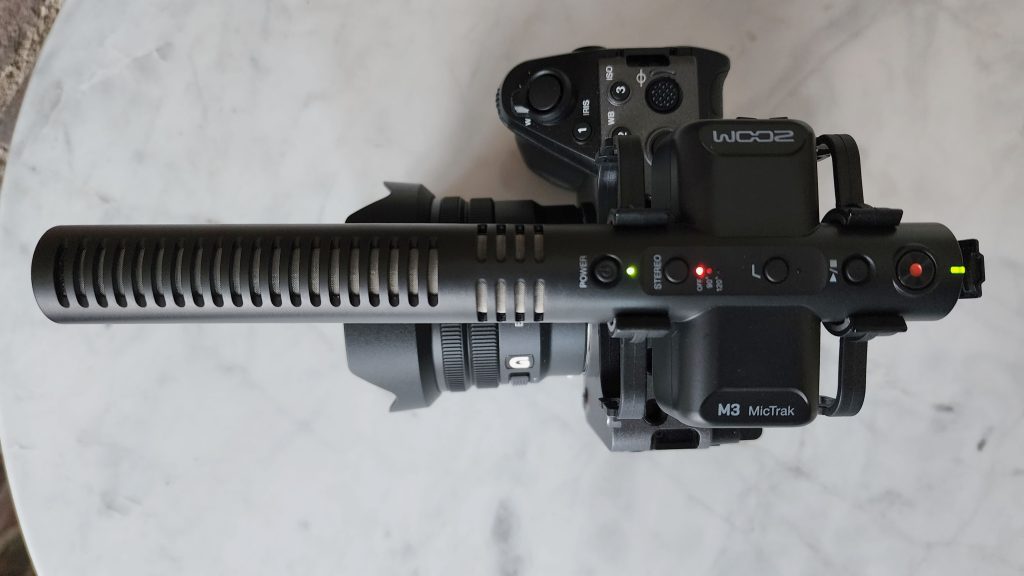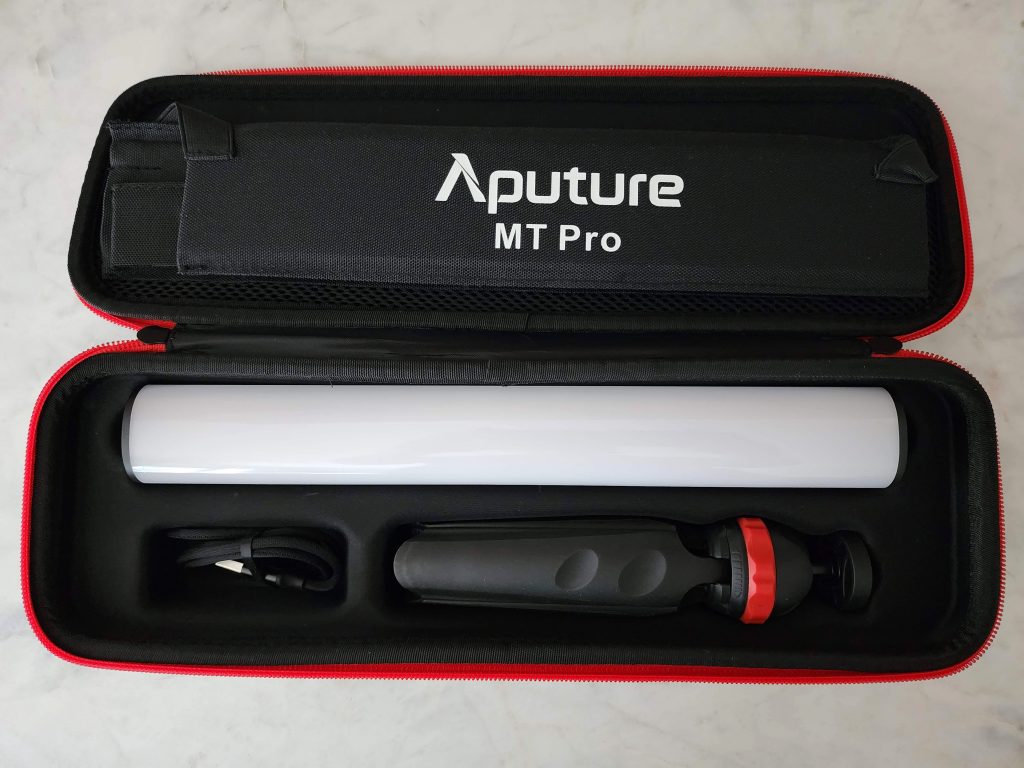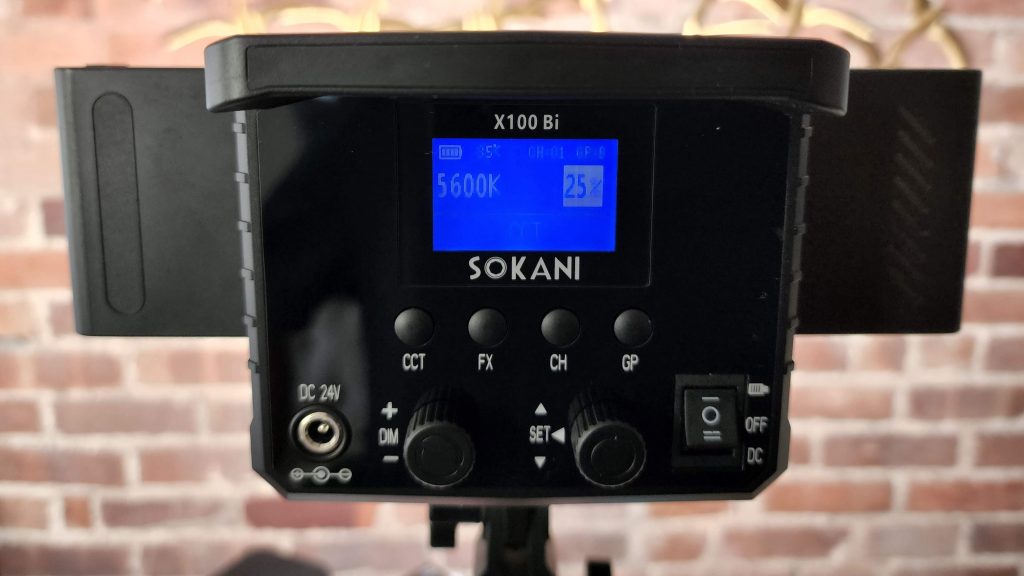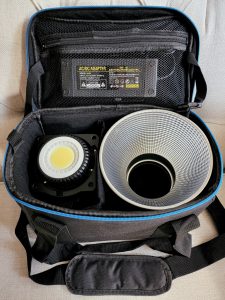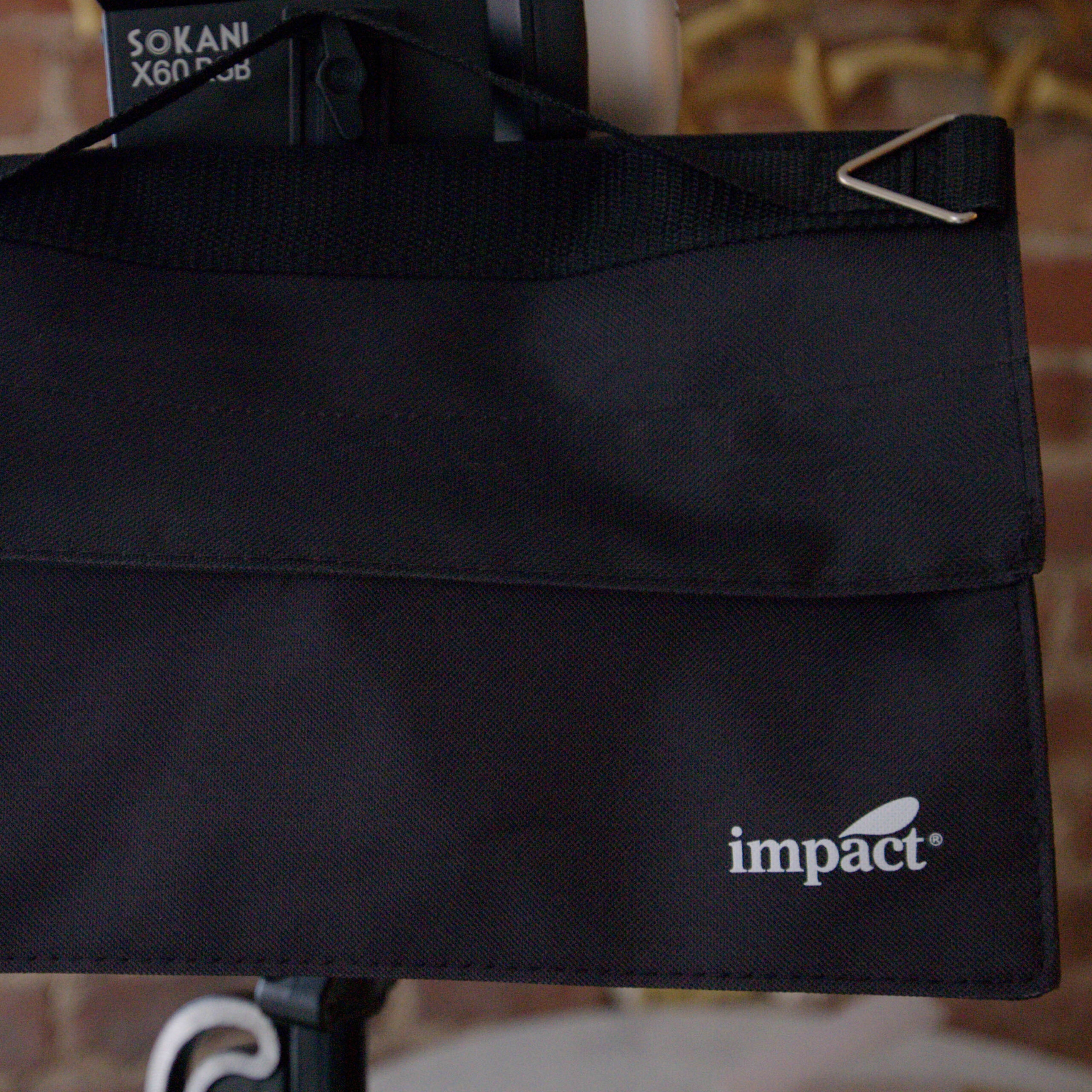Zoom has almost singularly started a revolution in audio recording for productions, especially at concerts and events when you don’t have time to worry about audio levels because you’ve got enough to worry about in the camera department. When I bought the Zoom F6, their 32-bit float six-channel audio recorder, everything changed. It’s solidly built in a metal chassis, has versatile power options, performs well with high-quality pre-amps, and best of all lets you set-and-forget audio levels because of its 32-bit float recording (no peak clipping, no hiss when boosting attenuated sources) onto up to six discrete tracks.
Now I want 32-bit float audio recording in everything, and when RØDE eventually gets into the game (e.g., when their Wireless GO series finally natively records 32-bit float instead of merely upscaling at output), I’m all-in. So with that enthusiasm, when Zoom itself announced its M2, M3 and M4 MicTrak series of products, I ordered without hesitation the one that I estimated would suit my needs best: the M3, which is a camera-mounted stereo shotgun microphone that can record internally in 32-bit float besides also outputting conventionally to a camera’s stereo microphone input.
You can see it here mounted on top of my Sony FX30, a great pairing in scale and application. From the top view, you can see a three-position stereo mode selector: besides choosing OFF to maximize hypercardioid directionality in monaural sound, you can choose 90° for a narrow stereo image, or 180° for an expansive stereo image. Even better, this in-the-field decision can also be decided later using Zoom’s proprietary desktop computer software that lets you select between combinations of multiple tracks recorded onto the inserted micro-SD card in 32-bit float multichannel format. You’ll see that besides a power button, there’s also a high-pass filter (cuts lowest frequencies such as rumbles as some wind noise), as well as a red button to start/stop recording, and a playback control to start/stop only the most recent clip recorded.
On one side of the M3, you can see a 1/8″ stereo headphone jack, with an associated volume rocker, and on the other side, there’s an 1/8″ stereo output for the included coiled cable to plug into your camera’s 1/8″ stereo microphone input, if you want to record the microphone’s pickup into your camera’s video recording. Ironically, even if that quality would improve upon any camera’s internal microphones, I actually choose to leave the M3 unplugged, forcing the camera to record audio using its internal microphones as a foolproof scratch audio backup, ensuring something to sync with. After all, the differentiating point of this product is to record better, 32-bit float audio onto a micro-SD card inside the microphone, and that will later need to sync with (but also replace) lower-quality audio from somewhere. If something goes wrong with that coiled cable connection running in parallel from the same source (such as settings buried deep in cryptic camera menus), better to have something to sync to, than nothing at all. Note that there’s also a USB-C port: you can offload files from the micro-SD card this way (slower than a card reader), but it also accepts a power source for longer recording time (beyond an already generous 12 hours from a pair of AA alkalines).
The Zoom M3 comes with a just-alright typical foam windscreen, but you can buy a deadcat already designed for, e.g., the RØDE VideoMic NTG, that will fight hardest against severe wind. Overall, the product seemed like another winner to me, until…
Yikes indeed. Despite being the earliest adopter, before trying out my M3, I started seeing reports like the above of really big flaws, and the common theme was: Zoom’s simply going cheap on us. Whether it’s their big “boo-hoo” about pandemic inflation/supply chain issues, or just arrogance, I should have known from the moment I got the package: for the first time, it arrived in plain cardboard with simple black lettering and no pictures. The above “YouTuber” (ugh) notes the severe/abnormal handling noise afflicting the M2 and M4 that are literally built for hand-holding (oopsie!), as well as incredibly vulnerable RF shielding: basically, these damn things pick up every possible amount of radio frequency interference from stuff you don’t even own or have nearby. And this is not a case of “exceptions make the rule.”
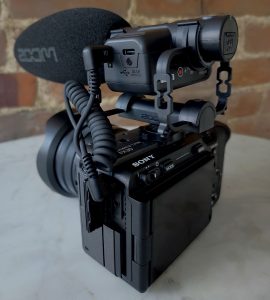 But for my own tests, let’s start with the shock mount. Simply put, it’s a far cry from Rycote. Embedded at the top of this post, you’ll find my audio-only upload to YouTube that speaks for itself. In quick summary here, basically this mic will pick up on any buttons and dials that you lightly touch on your camera. Not good.
But for my own tests, let’s start with the shock mount. Simply put, it’s a far cry from Rycote. Embedded at the top of this post, you’ll find my audio-only upload to YouTube that speaks for itself. In quick summary here, basically this mic will pick up on any buttons and dials that you lightly touch on your camera. Not good.
And worst of all, there’s the stunningly poor RF shielding. Another bad sign, yet it seems like a good thing at first: the M3 is ultra-lightweight plastic. That makes it easier to carry around, but without proper shielding, it means you’ll be severely compromising the reliability of your recordings with random interference in very many typical recording environments. Granted, my recording was in busy downtown Manhattan, but: isn’t that a fairly typical production environment? And notably, I’ve never had any shotgun microphone pick up on noise like this, ranging from my similar plastic RØDE VideoMic NTG, to my reference-standard Senn MKH 416. Bear in mind, the target market for people to buy this product, are those who want higher-quality, higher-performing sound quality at 32-bit float compared to the poor performance of low-grade 16-bit stereo pre-amps built into typical cameras at their microphone inputs.
In my recording here, I demonstrate how with absolutely no devices turned on in my studio, and just by wandering over to my window, I’m picking up on AM or FM broadcast radio that rises to a stunningly high noise floor. Basically, it’s some pop music station with shock jock DJs squealing over whatever else you’re recording through the microphone (in the case of my test, total silence around the microphone). Great!
Zoom is too gigantic and foreign of a corporation to meaningfully address this gigantic blunder. They will deflect if at all, declaring that “this product is designed for entry-level filmmakers who want all the latest features at a price they can afford,” but let’s not be fooled. Zoom’s engineers were completely aware of this worst-in-class severe interference, but their company estimated that you’re too stupid to care (or, enough of an impulse buyer to compromise). In hindsight, I’m not surprised: for two years or so, I’ve been back and forth with Zoom about a flimsy plastic washer on the top-mount bracket of their F6 that constantly gets stuck after tightening into the 1/4″-20 screw-hole on a camera base. The solution was simple: just use a metal washer, dummies! They’ve repeatedly deflected and waffled on their promises to fix it — so simple, and so dumb.
In all matters of creative enterprise, the credo prevails: never assume your audience is stupid. Let’s stay away from Zoom until they literally (and figuratively) clean up their noise.
